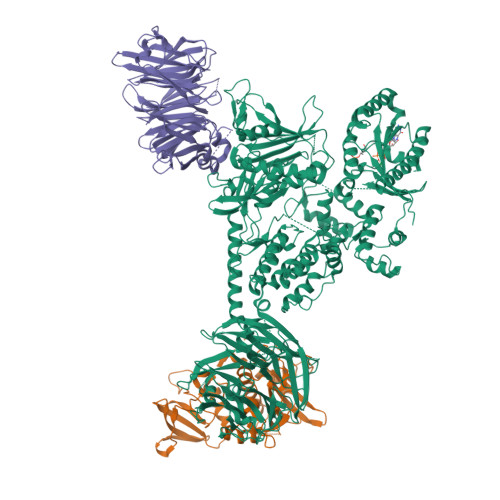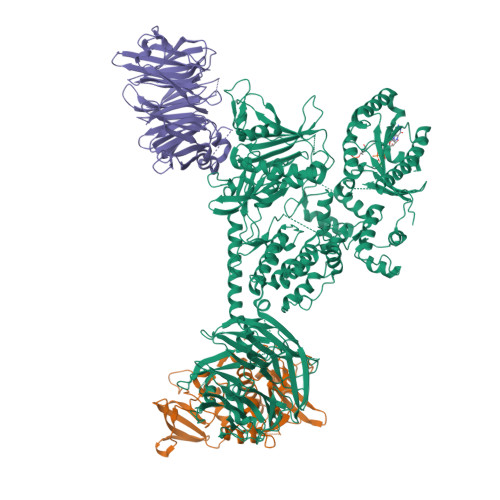Structure of LRRK2 in Parkinson's disease and model for microtubule interaction.
Deniston, C.K., Salogiannis, J., Mathea, S., Snead, D.M., Lahiri, I., Matyszewski, M., Donosa, O., Watanabe, R., Bohning, J., Shiau, A.K., Knapp, S., Villa, E., Reck-Peterson, S.L., Leschziner, A.E.(2020) Nature 588: 344-349
- PubMed: 32814344
- DOI: https://doi.org/10.1038/s41586-020-2673-2
- Primary Citation of Related Structures:
6VNO, 6VP6, 6VP7, 6VP8 - PubMed Abstract:
Leucine-rich repeat kinase 2 (LRRK2) is the most commonly mutated gene in familial Parkinson's disease 1 and is also linked to its idiopathic form 2 . LRRK2 has been proposed to function in membrane trafficking 3 and colocalizes with microtubules 4 . Despite the fundamental importance of LRRK2 for understanding and treating Parkinson's disease, structural information on the enzyme is limited. Here we report the structure of the catalytic half of LRRK2, and an atomic model of microtubule-associated LRRK2 built using a reported cryo-electron tomography in situ structure 5 . We propose that the conformation of the LRRK2 kinase domain regulates its interactions with microtubules, with a closed conformation favouring oligomerization on microtubules. We show that the catalytic half of LRRK2 is sufficient for filament formation and blocks the motility of the microtubule-based motors kinesin 1 and cytoplasmic dynein 1 in vitro. Kinase inhibitors that stabilize an open conformation relieve this interference and reduce the formation of LRRK2 filaments in cells, whereas inhibitors that stabilize a closed conformation do not. Our findings suggest that LRRK2 can act as a roadblock for microtubule-based motors and have implications for the design of therapeutic LRRK2 kinase inhibitors.
Organizational Affiliation:
Department of Cellular and Molecular Medicine, University of California San Diego, La Jolla, CA, USA.





















